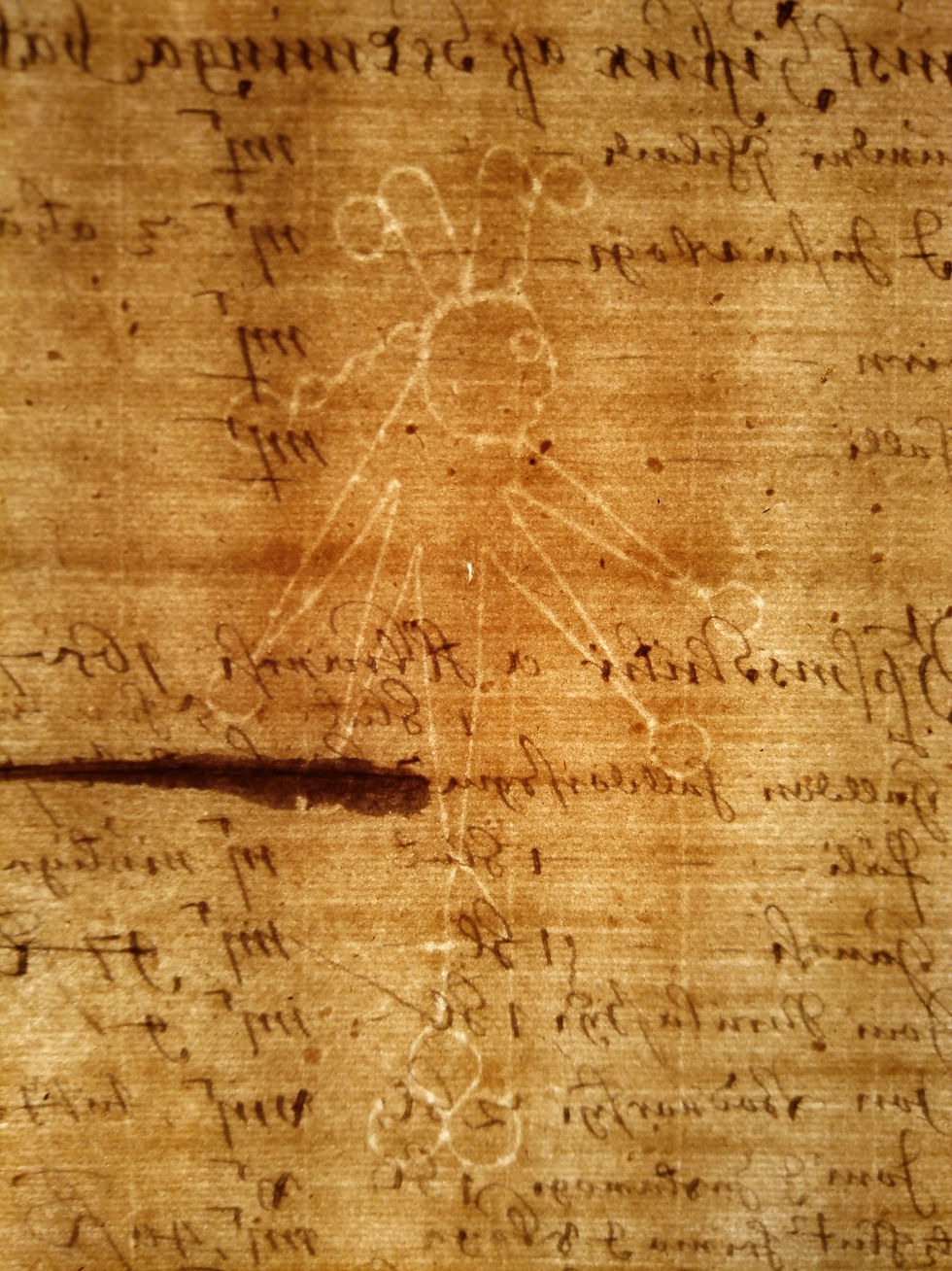Spot the Difference - the Solution
- Silvia Hufnagel
- May 15, 2020
- 3 min read
Last month we presented you with a little game of Spot the differences between watermarks. Here are the solutions:
Easy:


These images show two different watermarks, although they belong to the same type, ie. both watermarks are structures of two towers with porticullus. One of them, however, has two windows and an L* below, while the other has four windows, a cembric nut and L above the gate and a sun below, to name but a few differences.
Watermarks with two towers and windows were fairly popular in the German speaking area in the fifteenth and sixteenth centuries.
Difficult:


These images show most likely a pair of watermarks. Note the different position of the letter H on the chainline, the slightly dented door in the left tower and the different sizes of the windows next to the portcullis. Specialists among you might have spotted that the two images are taken on two subsequent leaves in one manuscript, which makes it likely that the watermarks are a pair instead of variants.
There are pairs of watermark because two people works simultaneously with two moulds (but only one deckle) on making paper. One person dips the mould with a deckle into the vat filled with pulp and pulls it out while shaking it slightly to spread the pulp evenly. Then he takes away the deckle, a frame of some sort, and pushes the mould with the paper pulp over a rack or plank towards the second person, the goucher. After the excess water has drained away, the goucher takes the mould and presses the paper pulp onto a piece of moist felt – this is known as gouching – and hands back the empty mould to the first person. Instead of waiting to get the empty mould back, the papermaker uses the deckle on a second mould, thus ensuring that the papermaking was done as quickly as possible. Both moulds have watermarks, but because they are handmade, they are slightly different, and these differences are visible in the two images above.
Really difficult:


Here you can see two versions of a watermark. The top of the roof in Lbs 6 fol is narrower and the L at the bottom is more lop-sided than in Lbs 336 fol, although both images show dented doors and towers.
Variants of watermark occur because of wear-and-tear. Individual moulds were used between one and four years, and during this time the watermarks changed due to mechanical stress on the mould, including rough handling and cleaning with a brush.
Extremely difficult:


Here you can see variants of a watermark in two different manuscripts. Note the same width of the collar, as well as the same position on the chainlines and the shape of the cap, but the difference in the mark below the fool‘s cap. Spotting the differences is made more difficult because of the low quality of the paper, which makes the watermark slightly fuzzy, and because the ink is still visible in these images, taken with backlighting and a mobile phone camera. The watermarks are found in two manuscripts; both are books of correspondence of Bishop Brynjólfur Sveinsson (1605-75), and through an analysis of the distribution of watermarks we can gain valuable insight into the actual making of the manuscripts, usage of paper and paper trade.
Further reading:
Sandra Schultz, Papierherstellung im deutschen Südwesten: Ein neues Gewerbe im späten Mittelalter. Materiale Textkulturen 18. Berlin: de Gruyter, 2018.
Dard Hunter, Papermaking: The History and Technique of an Ancient Craft. New York: Dover Publishing, 1978.





Comments